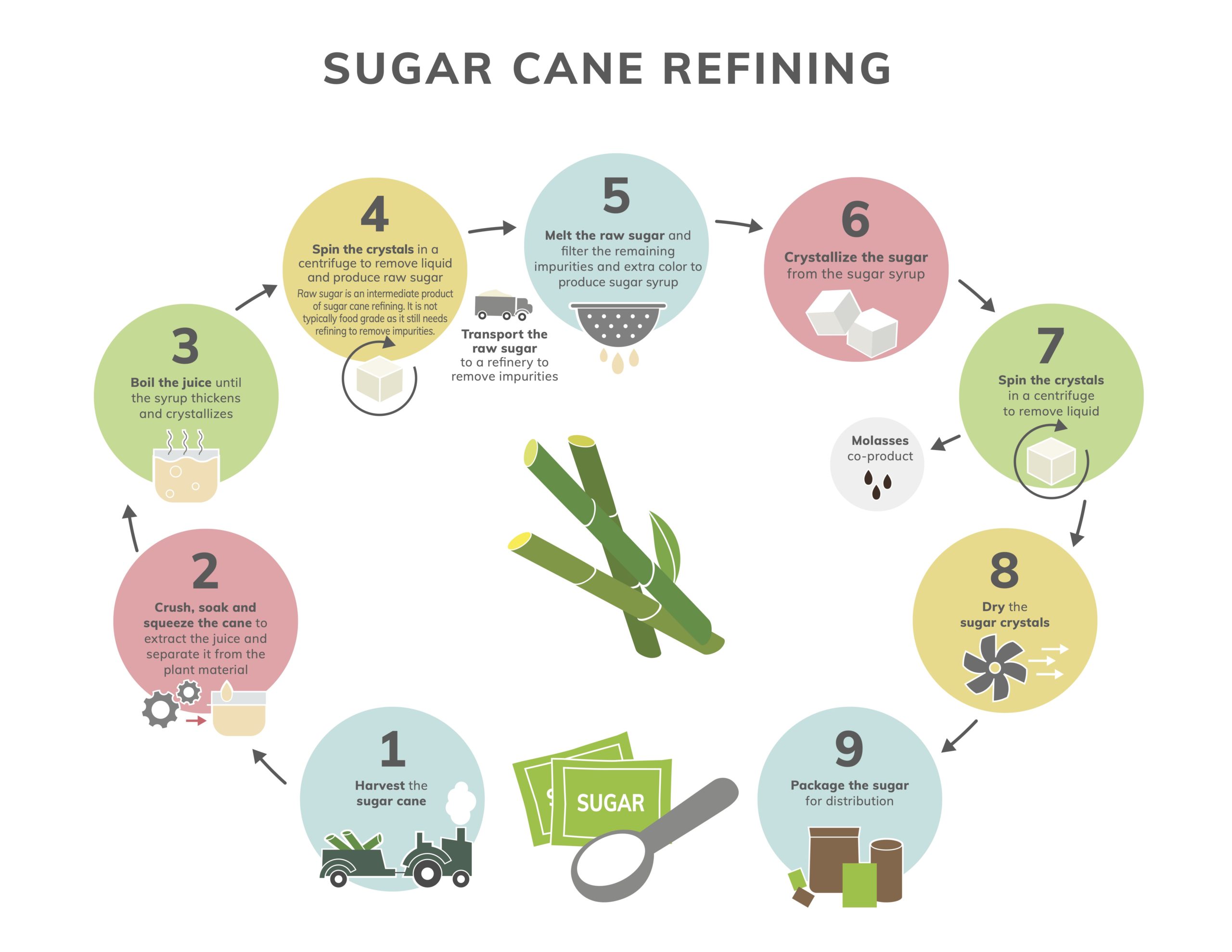Maximizar Rendimientos Y Minimizar Costos: Estrategias Avanzadas Para La Optimización Química Del Procesamiento De Azúcar De Caña
In the realm of walking cane sugar processing, the pursuit of optimizing yields while simultaneously minimizing expenses stands as an awesome challenge that needs a tactical mix of advanced chemical optimization methods. The intricacies of this venture look into the core of efficiency, where every aspect of the procedure plays a crucial duty in attaining optimal results. By checking out the details of chemical evaluation, enzyme utilization, pH control, filtering, and distillation methods, a landscape abundant with possibilities for improvement and technology emerges. Amidst this elaborate web of methods exists the pledge of opening untapped possibility and revolutionizing the very essence of sugar production. Cane Sugar Processing Chemicals.
Chemical Analysis for Effectiveness
Chemical evaluation plays an essential function in boosting the efficiency of sugar walking cane handling by supplying essential understandings right into the make-up and buildings of the raw products. By conducting comprehensive chemical evaluations on sugar walking cane examples, processors can determine the precise concentrations of sucrose, glucose, fructose, and various other elements present in the raw material. This information is vital for maximizing the different stages of the sugar walking cane processing chain, from crushing to condensation.
Furthermore, chemical evaluation makes it possible for processors to recognize contaminations such as organic acids, healthy proteins, and minerals that can impact the top quality and yield of the last sugar product. By measuring these impurities, cpus can implement targeted approaches to eliminate or minimize their impacts, inevitably enhancing the total effectiveness of the handling plant.
Furthermore, chemical evaluation helps with the surveillance of process specifications such as pH, temperature level, and viscosity, permitting cpus to make real-time modifications to ensure ideal problems for sugar extraction and condensation. On the whole, a thorough understanding of the chemical structure of sugar walking cane is essential for making the most of returns, minimizing expenses, and keeping high product quality in the sugar production market.

Enzyme Use for Enhanced Returns
With a tactical strategy to enzyme usage, sugar walking cane processors can substantially boost their yields while keeping operational effectiveness in the manufacturing process. Enzymes play a vital role in sugar walking stick handling by damaging down complex carbohydrates into simpler sugars, hence enhancing the total sugar removal efficiency. By integrating details enzymes customized to target the different elements of sugar cane, such as cellulose and hemicellulose, processors can boost the launch of sugars throughout extraction.
Enzyme use offers the advantage of maximizing sugar yields from the raw product while decreasing the energy and resources needed for processing. Via mindful selection and application of enzymes, sugar walking stick processors can maximize their operations to accomplish greater these details returns and success.
Ph Control for Ideal Handling
Enzyme application for increased returns in sugar cane handling lays the structure for dealing with the vital aspect of pH control for optimum handling effectiveness. Preserving the appropriate pH degree throughout numerous stages of sugar cane handling is necessary for optimizing returns and decreasing expenses. pH control is particularly crucial throughout the extraction and clarification procedures. In the extraction stage, preserving the correct pH aids in accomplishing efficient sucrose removal from the walking stick. Controlling the pH throughout information help in the precipitation of contaminations use this link and non-sucrose elements, leading to a purer final item. PH influences the activity of enzymes included in the breakdown of macromolecules, influencing the overall performance of the process. By meticulously keeping an eye on and adjusting the pH degrees at different processing steps, sugar cane cpus can improve sugar recovery prices, reduce chemical usage, and maximize the overall production procedure. Effective pH control not just boosts the top quality of the final product yet additionally contributes to lasting and cost-effective sugar walking cane processing procedures.
Advanced Filtering Methods
Executing sophisticated filtering methods in sugar walking stick processing enhances the efficiency and purity of the end product via improved splitting up techniques. By integrating innovative filtration technologies, such as membrane purification and activated carbon filtering, sugar walking stick handling plants can attain higher degrees of sugar recovery and enhanced quality control.

Turned on carbon filtering is one more advanced technique that aids in the elimination of colorants, off-flavors, and recurring pollutants from sugar cane items. By more helpful hints making use of triggered carbon's adsorption properties, this purification technique improves the quality and preference of the sugar, satisfying the high standards required by consumers and industry laws.
Energy-Efficient Distillation Approaches
Energy-efficient distillation approaches are essential for enhancing the sugar walking cane processing sector's energy intake while maintaining high-grade product criteria. Traditional purification procedures can be energy-intensive, bring about higher manufacturing prices and environmental influences (Cane Sugar Processing Chemicals). Implementing energy-efficient distillation approaches, such as vacuum purification or molecular purification, can considerably lower energy needs while boosting general procedure efficiency
Vacuum purification includes decreasing the pressure within the distillation system, which decreases the boiling point of the liquid blend being refined. This decrease in boiling point decreases the energy required for vaporization, resulting in energy cost savings contrasted to standard distillation methods.
On the other hand, molecular distillation uses brief course purification methods under high vacuum cleaner problems to different substances based upon their molecular weight. This approach is particularly effective for heat-sensitive substances, as it operates at lower temperatures, decreasing power intake and preserving item quality.
Conclusion
